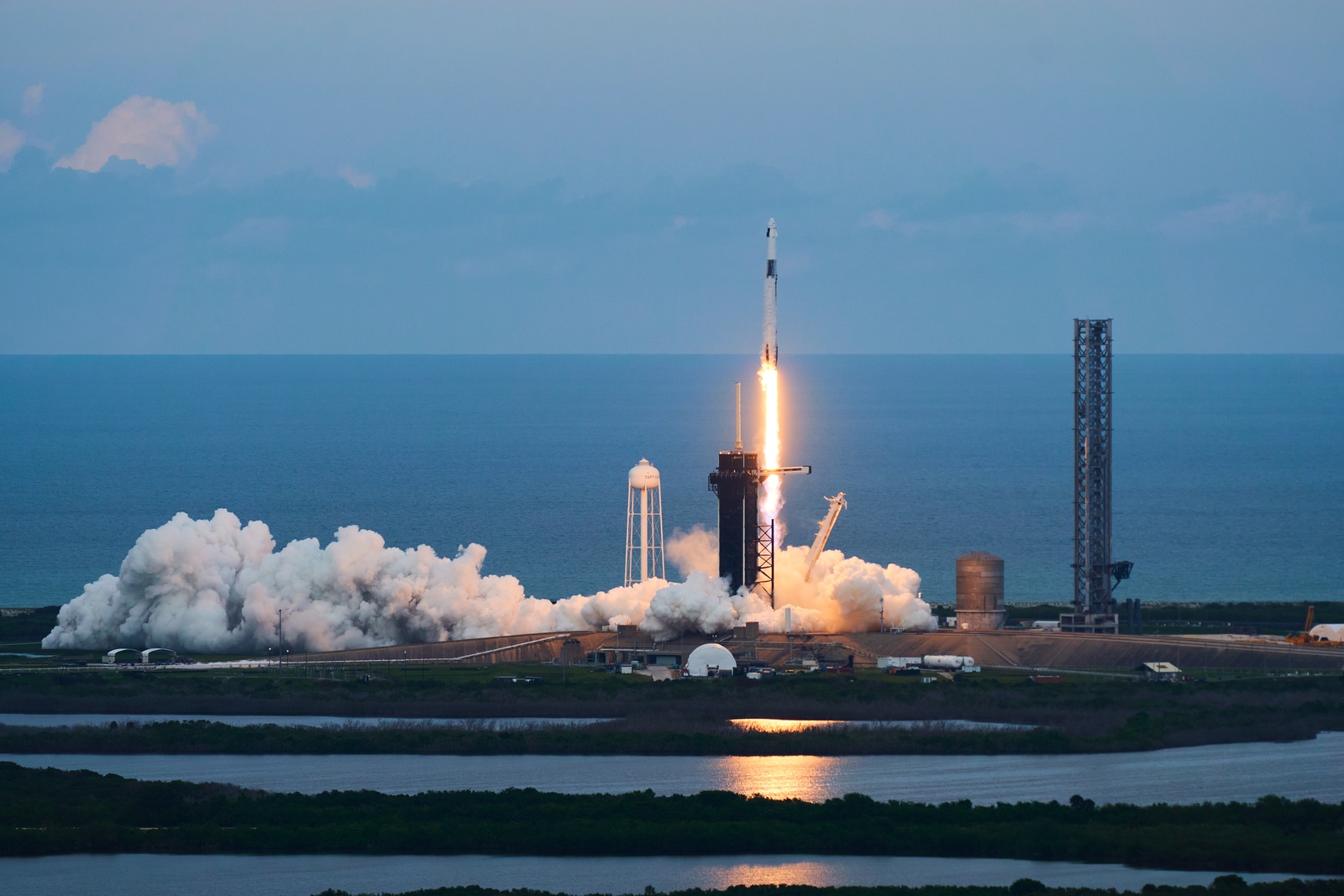Updated 8:15 p.m. Eastern with comments from post-launch press conference.
WASHINGTON — Axiom Space’s second private astronaut mission is on its way to the International Space Station after a launch May 21.
A SpaceX Falcon 9 lifted off from Kennedy Space Center’s Launch Complex 39A at 5:37 p.m. Eastern. The Crew Dragon spacecraft carrying the four-person Ax-2 crew separated from the rocket’s upper stage 12 minutes after liftoff.
The Dragon spacecraft, named Freedom, is scheduled to dock with the station at about 9:16 a.m. Eastern May 22. The spacecraft will remain there for eight days before returning with its four-person crew.
SpaceX dealt with a minor technical issue during the countdown involving a leak in a valve in the attitude control system of the Falcon 9 booster, used to orient the booster for landing. Benji Reed, senior director of human spaceflight programs at SpaceX, said at a post-launch briefing that engineers determined the leak would not impair operations of the booster and went ahead with the launch. The booster landed successfully at Cape Canaveral’s Landing Zone 1.
Ax-2 is commanded by Peggy Whitson, a former NASA astronaut who holds the U.S. record for longest cumulative time in space at 665 days. She is currently director of human space flight at Axiom.
John Shoffner, a private astronaut who trained as a backup for Axiom’s Ax-1 mission in 2022, serves as pilot for Ax-2. The two mission specialists on board are Ali Alqarni and Rayyanah Barnawi, two Saudi astronauts selected by the Saudi Space Commission in February to fly on the mission under an agreement signed with Axiom Space in September 2022. Alqarni and Barnawi are the second and third Saudi citizens to go to space, after Sultan bin Salman Al Saud, who flew as a payload specialist on a space shuttle mission in 1985. Barnawi is the first female Saudi astronaut.
The Ax-2 mission was scheduled to spend 10 days at the ISS, but delays in the launch caused by a postponed Falcon Heavy launch led Axiom Space and NASA to agree to shorten the mission by two days to fit it into a crowded manifest of missions going to the station.
Derek Hassmann, chief of mission integration and operations at Axiom Space, said at a May 15 briefing that the company prioritized research activities planned for the mission but dropped some lower priority outreach and other activities. However, the Saudi astronauts still plan to carry out a “whole series of media events” during their time on the station, he said, including a series of sessions with students.
Even before the mission was shortened, the crew had a crowded schedule. The astronauts will carry out more than 20 experiments in topics ranging from life sciences to in-space manufacturing. Axiom has its own technology demonstrations as well to support its plans to develop commercial modules it will add to the ISS as a precursor for a standalone space station.
“We have an absolutely jam-packed mission,” Lucie Low, chief scientist at Axiom, said during a briefing about the science planned for the mission in April. The company aggregated the experiments from the Saudi Space Commission and other partners, then worked to fit those projects into available crew time and ISS resources. “We basically play a massive game of very complicated four-dimensional Jenga.”
The company did incorporate lessons from Ax-1, where the four-person crew was overloaded with tasks. The Ax-2 crew adjusted the training for the mission, increasing work in some areas and decreasing it in others.
“We need to go back to more of a short-duration training style, more like how we trained for shuttle flights,” Whitson said at a May 16 briefing, “focusing on the areas where we need the most experience with.”
She noted her schedule is “a lot less constrained” than Michael López-Alegría, who commanded Ax-1 last year. “I’ll be available to help the crewmembers a lot more as they need assistance, which will primarily just be the first day or two,” she said. “Once they get their space legs under them, I know these guys are going to be extremely competent.”
Ax-2 is the tenth crewed flight by SpaceX in a little less than three years, starting with the Demo-2 commercial crew test flight for NASA in May 2020. Since then SpaceX has launched six crew rotation missions to the ISS as well as Ax-1. It also launched Inspiration4, a private astronaut mission in 2021 that spent three days in space without docking with the ISS.
“It’s kind of hard to believe,” Reed said at the post-launch briefing of the 10 crewed launches SpaceX has now performed. “It is certainly what I had hoped we would be able to do.” He declined to speculate on long-term plans other than to note SpaceX’s ultimate ambitions to make humanity multiplanetary.
SpaceX is scheduled to launch up to three more crewed missions this year: the Crew-7 mission for NASA, Polaris Dawn private astronaut mission and Axiom’s Ax-3 mission, which is tentatively scheduled for late this year. While NASA approved the Ax-3 mission in March, Axiom has not yet disclosed the crew for it.
